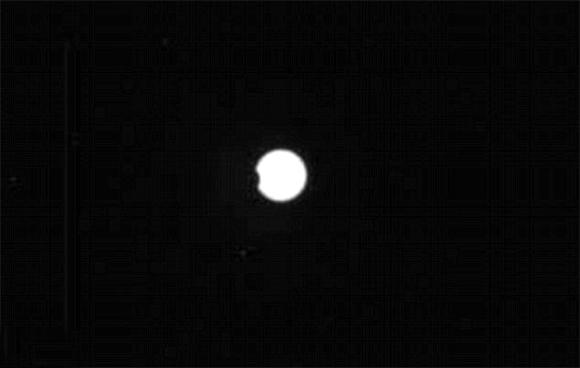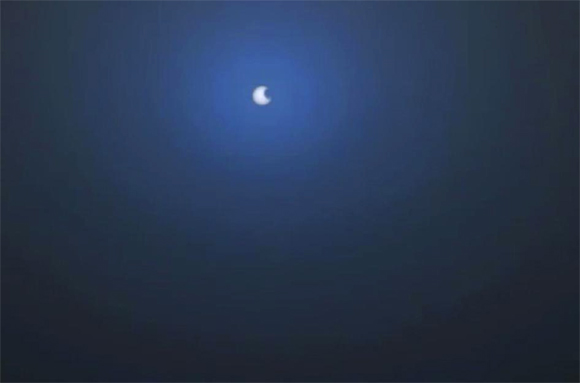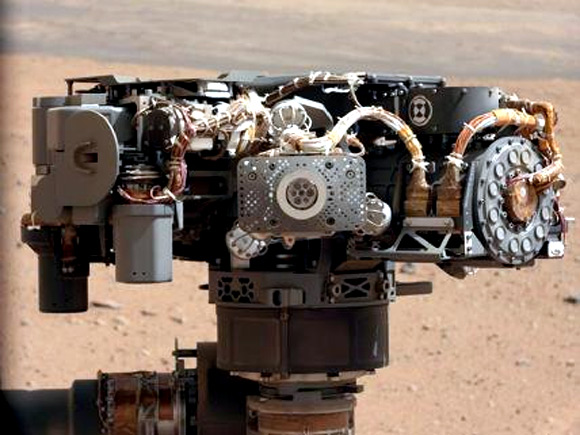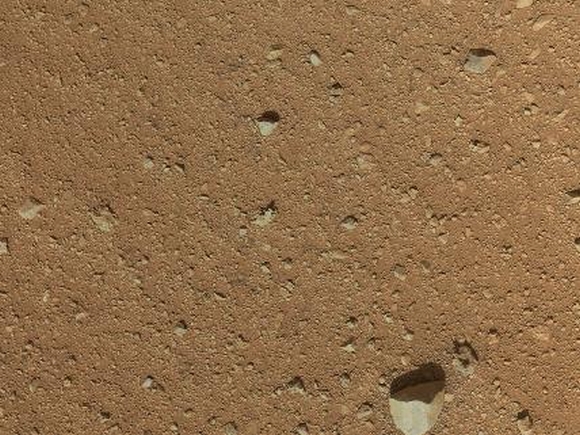
National Aeronautics and Space Administration's Curiosity rover has beamed back a picture of its first solar eclipse from the surface of Mars, showing Phobos, one of the two moons orbiting the Red planet, moving across the face of the Sun.
The new picture taken from the surface of Mars displays a slight bite taken out of the sun by the Martian moon, as seen from the rover's vantage point in Gale Crater.
Click on NEXT for more...

The extraordinary photograph was taken by the NASA rover Curiosity, which is currently making its way across the surface of the Red Planet.
It captures a moment during a partial eclipse, with Phobos just jutting into Mars's view of the sun.
Click on NEXT for more...

While Mars may be a little further away from the sun than we are here on Earth, it would still be damaging to look directly into its light.
If Curiosity pointed its regular lens straight at the sun, it could have been destroyed.
Click on NEXT for more...

Instead, the rover used a neutral density filter, cutting down the sun's intensity by a factor of 1,000, according to NBC News.
Curiosity took hundreds of images during the partial eclipse. It is set to take more during another eclipse involving Deimos, Mars's other moon.
However, most images have not yet been beamed back to Earth, given the limitations on the rover's ability to transmit data.
Click on NEXT for more...
...